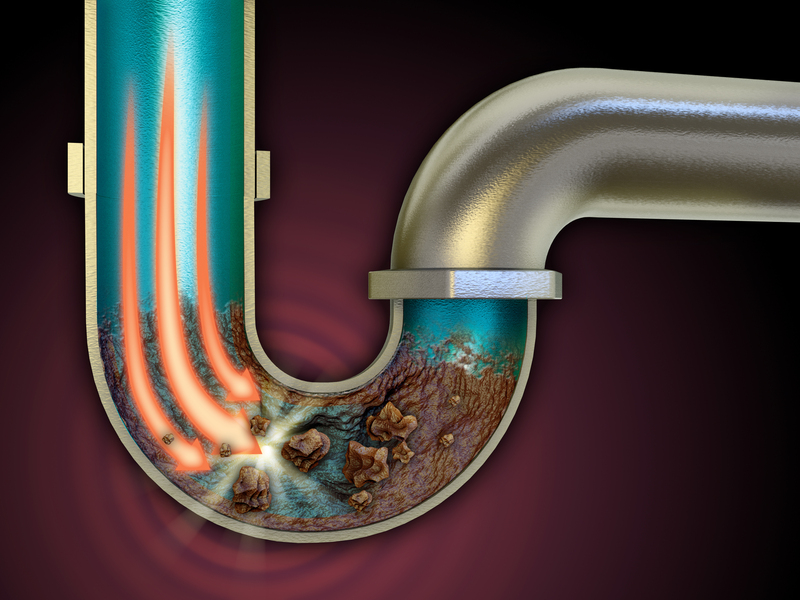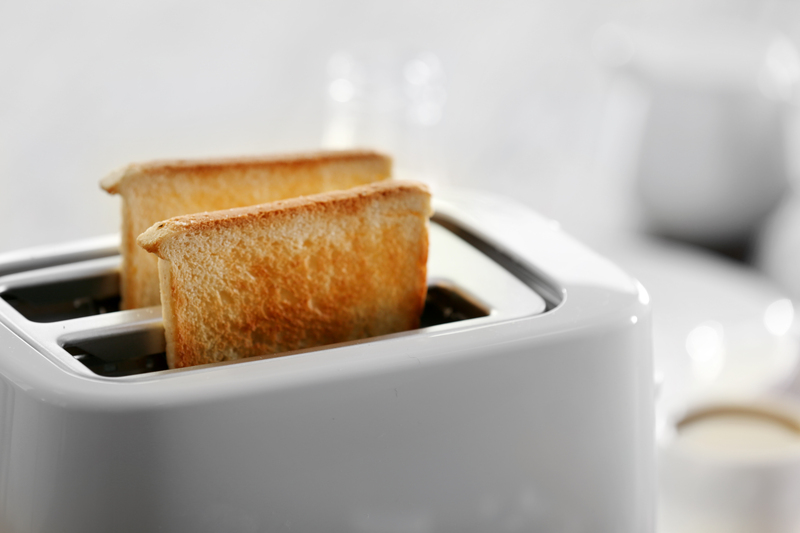How to Keep Your Window Sills Clean and Mould-Free
Posted on 05/09/2025
How to Keep Your Window Sills Clean and Mould-Free
Is mould creeping onto your window sills? Keeping your window sills clean and mould-free is crucial for a fresh, healthy home. Discover expert advice, easy cleaning methods, and preventive strategies to banish dirt and mould forever.
Understanding the Importance of Clean and Mould-Free Window Sills
Window sills are often overlooked during routine home cleaning, yet they are one of the most vulnerable spots for dirt accumulation and mould growth. Not only do dirty window sills make your windows look unattractive, but mould on window sills poses health risks and can cause structural damage if left untreated.
The Risks of Mould on Window Sills
- Respiratory Issues: Mould spores can trigger allergies and aggravate asthma.
- Permanent Stains: Stubborn mould can leave unsightly marks on painted or wooden sills.
- Decay: Mould growth can gradually deteriorate wooden window sills, shortening their lifespan.
- Unpleasant Odours: Persistent dampness and mould lead to musty smells within your living space.

Why Window Sills Attract Mould and Dirt
Before we address how to keep your window sills clean and mould-free, it's essential to understand why these areas are so susceptible to trouble:
- Moisture: Condensation from windows provides ideal conditions for mould growth.
- Poor Ventilation: Inadequate airflow allows excess moisture to settle on sills.
- Dust Accumulation: Dust feeds mould and encourages its spread.
- Neglect: Infrequent cleaning allows dirt and mould to build up unnoticed.
Types of Window Sills and Their Maintenance Needs
You may have different types of window sills in your home, and each requires a specific cleaning approach:
- Wooden Window Sills: Porous and more prone to moisture absorption and mould.
- uPVC or Vinyl Window Sills: Easier to clean, but still vulnerable to mould in damp conditions.
- Painted or Varnished Sills: Need gentle cleaning agents to avoid stripping finishes.
- Stone or Tile Sills: Resistant to rot but require regular dusting and cleaning to prevent mould spores from settling.
Essential Cleaning Supplies for Pristine Window Sills
- Microfiber Cloths: For lifting dust without scratching surfaces.
- Soft-Bristled Brushes: To clean crevices and corners effectively.
- Spray Bottle: For evenly applying cleaning solutions.
- White Vinegar: A natural disinfectant for killing mould spores.
- Baking Soda: For scrubbing stubborn stains and neutralizing odours.
- Mild Detergent or Soap: Gentle enough for regular use.
- Protective Gloves: To shield hands from mould and harsh cleaners.
- Vacuum Cleaner with Brush Attachment: Removes dust and debris before wet cleaning.
Step-by-Step Guide: How to Clean Window Sills Thoroughly
1. Remove Dust and Debris
Begin by vacuuming or wiping down the window sills with a microfiber cloth to pick up loose dirt, dead insects, and dust. Don't forget corners and crevices where dirt hides.
2. Wash With a Gentle Cleaning Solution
Mix a few drops of mild detergent in warm water. Dip a soft cloth in the solution, wring it well, and wipe the entire sill. For uPVC and vinyl window sills, this process is usually sufficient. For wooden sills, avoid saturating the surface to prevent water damage.
3. Target Mould and Mildew
If you notice black or green mould spots, use a solution of equal parts white vinegar and water. Apply via a spray bottle, let it sit for at least 10 minutes, then scrub gently with a brush or sponge. Repeat if necessary for persistent mould. Avoid using bleach on wooden sills as it can damage the finish.
4. Rinse and Dry Thoroughly
After cleaning, wipe the surface with a clean, damp cloth to remove any remaining cleaner or vinegar. Finally, dry the window sill completely with a towel or cloth. This step is critical for keeping your window sills mould-free.
5. Extra Care for Stubborn Stains
For persistent or old stains, make a paste of baking soda and water. Apply it to the spot, let it rest for 15 minutes, then scrub gently. Wipe off with a damp cloth and dry the area.
Natural Cleaning Alternatives for Eco-Friendly Homes
If you prefer eco-friendly window sill cleaning methods, try these alternatives:
- Lemon Juice: Natural acidity helps remove mould and stains.
- Essential Oils: Tea tree oil is a powerful natural mould killer. Add a few drops to your cleaning solution.
- Hydrogen Peroxide: Use 3% solution to disinfect and remove mould spores (test on a small area first).
Preventing Mould and Dirt: Tips for Long-lasting Cleanliness
Knowing how to keep window sills clean and mould-free is about more than just cleaning--it's also about preventing recurrence. Here are preventative measures for spotless window sills:
- Improve Ventilation: Open windows or use extractors regularly to reduce condensation.
- Use a Dehumidifier: Lower indoor humidity levels to discourage mould growth.
- Wipe Down Excess Condensation: Especially in winter, regularly dry off any water droplets on windows and sills.
- Apply Anti-Mould Paint: Protect wooden or painted sills with a special anti-mould coating.
- Regular Cleaning Routine: Clean window sills at least once a month and after heavy rain.
- Seal Cracks and Gaps: Prevent water ingress and maintain a dry surface.
- Trim Outdoor Plants: Keep foliage away from windows to reduce outdoor dampness affecting indoor sills.
Best Practices for Different Seasons
- Spring/Summer: Increase ventilation--open windows to allow fresh air to circulate and dry window sills.
- Autumn/Winter: Monitor condensation closely and use dehumidifiers where necessary. Wipe window sills after rain or snow.
How to Tackle Serious Mould Infestations
Sometimes, DIY cleaning routines aren't enough. If you're dealing with persistent or large patches of black mould on your window sills, take these steps:
- Wear Protective Gear: Use gloves and a mask to avoid inhaling spores.
- Remove and Dispose of Severely Affected Material: For rotted wooden sills, replacement may be necessary.
- Consult a Professional: If mould returns quickly or covers a large area, seek help from mould remediation experts.
- Address Underlying Causes: Persistent mould may indicate leaks or severe damp that need professional attention.
Regular Maintenance for Window Sill Health
Adopting a routine is the best way to keep window sills clean and free from mould. Here's a simple checklist to guide you:
- Dust window sills weekly with a microfiber cloth.
- Check for signs of condensation and wipe away moisture immediately.
- Inspect sills monthly for early signs of mould or mildew and clean promptly.
- Seasonally deep clean and refresh protective coatings as needed.

Frequently Asked Questions: Keeping Your Window Sills Clean and Mould-Free
How often should I clean my window sills?
You should at least wipe down your window sills once a week to remove dust and moisture. Deep clean and inspect for mould or mildew monthly for best results.
What is the safest way to remove mould from window sills?
White vinegar and water is one of the safest and most effective solutions for removing mould. Always wear gloves and ventilate the area well during the process.
Can I use bleach on window sills?
While bleach works on non-porous surfaces, it can damage wood and certain paints. Use it with caution and never mix it with other cleaners.
Vinegar or specialised mould removers are preferable for most sills.
How do I prevent condensation on window sills?
Improve ventilation, insulate your windows, and use a dehumidifier to reduce moisture buildup.
Are mould-resistant paints effective?
Yes, mould-resistant and anti-mould paints can significantly reduce the risk of new mould growth, particularly on wooden or painted surfaces.
Conclusion: Enjoy Clean, Healthy Window Sills All Year Round
By understanding why window sills get dirty and mouldy, choosing the right cleaning routines, and sticking to preventive measures, you can maintain a home with clean, beautiful, and mould-free window sills. Regular attention not only extends the lifespan of your windows but also contributes to a healthier indoor environment for you and your family.
Take action today! Incorporate these easy-to-follow cleaning and prevention tips into your routine and say goodbye to dirty, mouldy window sills for good. Your windows--and your health--will thank you.



